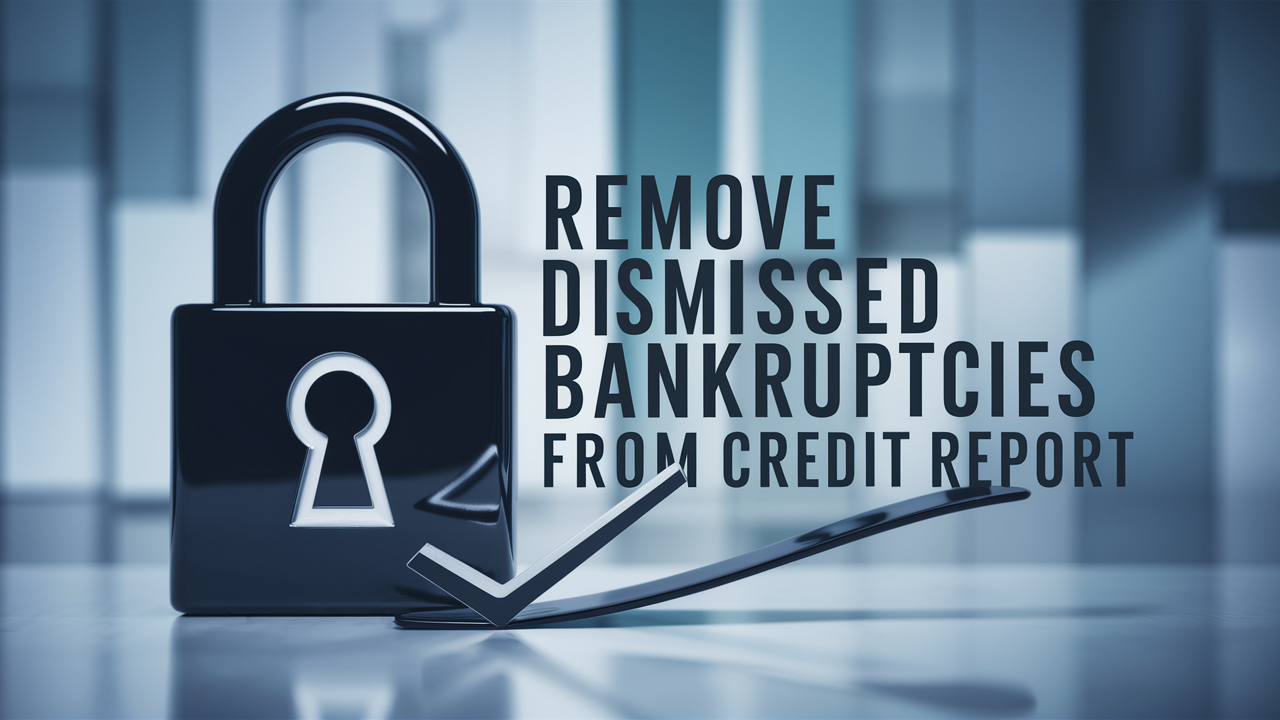How To Get Something Off Credit Report?
A credit report is a crucial part of our financial existence. It is used in credit applications to determine whether or not one will secure a new credit card, get a loan for a car or home, sign a lease for an apartment, or join a utility company. Any detrimental mark on your credit profile – missed payments, collection, bankruptcy – may significantly reduce your credit scores, and lenders are likely to reject you.
You, therefore, have the legal right to dispute any mistakes or outdated information that you may come across on your credit report. Eventually, you can pay some amount of time and effort to request that inaccurate, incomplete, or unverifiable information be deleted so it would not impact the credit scores and hinder the next credit application process.
Check Your Credit Reports
The first, which is essential and free, is to request your credit reports from the three major reporting agencies: Equifax, Experian, and TransUnion. For starters, according to the law, you’re allowed to request your reports from all the bureaus once a year for free. Read through the reports thoroughly to identify mistakes and other undesired entries in your past (most undesirable information remains on your report for seven years), replicated credentials, account numbers, or other indicators of fraud or identity theft.
You can highlight any errors or entries that are no longer valid to challenge with the bureaus. Read on for the full process on how to challenge invalid information that you find on your reports so that the bureaus delete or correct it as the case may be.
How to Challenge the Inaccuracy or Irrelevance of the Data
The Fair Credit Reporting Act specifies that credit bureaus must investigate all the disputes that a consumer files within 30 – 45 days from the date that the credit bureaus received the dispute. Here is the process for disputing inaccurate or outdated items: Here is the process for disputing inaccurate or outdated items:
- Identifying Which Bureau is Reporting the Information Find out whether it is one of several bureaus or the specific bureau that has compiled the data that you want to challenge. Not all creditors supply reports to all three bureaus, and if you find an error with the bureau that has listed it, you will need to dispute it with all the bureaus.
- Gather Supporting Documentation: The more proof and information about the issue that can be delivered to support the Dispute, the superior. A supplementing document entails account statements, contracts that state the correct loan or debt amount, certified copies of legal documents, and police reports on identity theft, among others.
- Draft Your Dispute Letter Compose a concise and specific dispute note, detailing which pieces of information you would like investigated and/or redacted/corrected. Specifically, a list at the bottom of each item details precisely why the information is wrong, misleading, or unprovable. Request the bureau to delete the items in their entirety once the identity has been ascertained.
- Make sure that you make copies of all the documentation that you will be required to submit to facilitate your case. You should also provide copies of all the documents that substantiate your claim in the letter. It is essential that everything is well labeled and that areas where account numbers, dates, and other important details are indicated be pointed out clearly. It gives tangible support to stand with the claim you are making.
- If you do not receive a satisfactory reply from the insurance company, send the Dispute Letter by certified mail. Copy your full dispute package for your records or your future use in any case. Then, make a copy of the letter and mail it to the credit bureau through the post office and ensure that the letter is sent through certified mail. This means that you are assured that the credit bureau has received your letter by affixing a stamp of receipt on the letter. This shields you in the event you continue incurring negative impacts on the credit items in dispute beyond the deadline for disputing.
- Follow Up Accordingly The bureau should be given 30-45 days for the investigation to be conducted. More often you will receive a letter informing you of the outcome of the dispute as to whether or not the item in dispute was deleted.
If the bureau argues that there are mistakes in the report or the information is old, unsuitable for verification, or should not be reported on, then they must immediately delete it from your report.
This should increase your credit scores. Credit scores:
If the investigation does not solve the concern to your satisfaction, federal law permits you to write a statement of up to 100 words to be included in your credit file explaining your position on why you disagree with the information the bureau is reporting about you. The statement gets attached to your report each time a lender refers to it.
You can also dispute other investigations that involve the disputed items with other credit bureaus that list the same items as the furnisher or the original creditor who reported the information to the bureaus. As per the rules of the Fair Credit Reporting Act, they are required to carry out their investigations on their own.
Otherwise, use civil litigation against such bureaus by suing them to rectify severe mistakes that amount to fraud in violating the provisions of the Fair Credit Reporting Act. In most cases, where you can seek the services of a lawyer, you may be awarded actual damages, punitive damages, and also the cost of your legal costs.
Thus, the specific negative items involve the following procedures:
Some of the negative items on credit reports take a special process to be deleted from your credit reports. Here's a quick overview:
Late Payments If you on the other hand were late in making some payments but would wish the creditors to delete the late payments from your report, you also need to negotiate goodwill deletion with your creditor. Unfortunately, the credit bureaus rely on the lenders’ records; therefore, persuading the lender to remove the references to the late payments is crucial.
Collections Accounts Challenging collections listings with the bureaus is feasible if the account was paid, settled, or reported in a wrong way after the time that the bureau legally should have kept the information.
You may also need to contact the collections company asking for the account updates or deletions for several reasons – you were not aware of the existence of this debt, have already paid back the owed amount, negotiated with the collector to pay a certain amount and closed the account, filed for bankruptcy, or seek other legal protection from the legal judgments. But do not be hasty and presume that the paid, settled, or obsolete collections accounts are going to be erased from the credit history, as there should be written agreements for such accounts.
Bankruptcies However, if it is still reflected in reports 10 years after the filing of a bankruptcy, you can challenge the credit bureaus directly and sue them on the merit of the case to have it removed.
When the credit is less than 10 years old, there is no way to force early deletion, but you can send letters that include comments about special circumstances.
Judgments While collections and late payments remain on credit reports for up to seven years, court judgments simply fall off the reports on their own after seven years. But if you find that a judgment you consider to be stale is still in your credit report, then you need to challenge it.
In dealing with unpaid judgments that are less than seven years old, it is advisable to talk to the plaintiff who sued you to arrange for full payment of the debt to be paid early and also to request a written undertaking from the plaintiff that he/she will not renew the judgment again. It is also worth knowing that once paid in full, one can have the judgment erased. However, the payment history may be recorded somewhere, maybe with the service provider or a credit bureau.
Identity Theft If you have been a victim of identity theft, the first thing that you should do is file an identity theft report and fraud victim statement to the three bureaus and every creditor that reported fraudulent accounts opened in your name. I offer a photocopy of the police report you have filed together with any other document the identity investigator may require.
According to the law, credit bureaus and creditors cannot keep fraudulent debts due to ID theft once the scandal has been proven within 30 days of dispute.
Conclusion
It is however very important to correct errors in credit reports since it involves a lot of time and effort but it goes a long way in determining one’s financial status in the future. Always make use of certified mail on all disputes, ensure that you document all your cases, follow up to receive written results and if bureau investigations continually fail then you should seek the service of an attorney.
The important thing to remember is that the scores and reports are records that can be cleaned up after a certain amount of time and effort. It simply means that you only need to be aware of your rights and use them where possible throughout the complaints process.
Ready to boost your credit score? Call +1 888-804-0104 now for the best credit repair services near you! Our expert team is here to help you achieve financial freedom and improve your credit. Don't wait—get started today!
Related Stories
Recent Posts
Does Closing a Checking Account Affect Your Credit Score? Here’s the Truth
Is a Home Equity Loan a Second Mortgage? The Definitive 2025 Guide
Which Credit Score is Most Accurate? FICO vs VantageScore
Does Closing a Checking Account Affect Credit Score? – Complete Guide for Consumers
Credit Captain Reviews (2025): Is It Legit, Safe, and Worth It?



